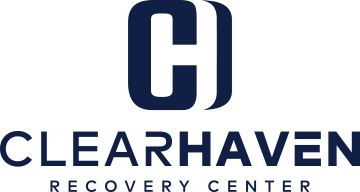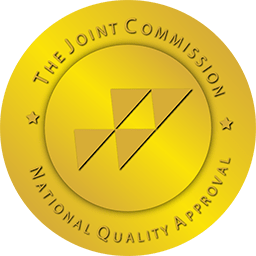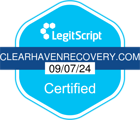If you or a loved one is struggling with addiction to prescription drugs, you’re not alone. Prescription drug abuse has become an epidemic in recent years, with millions of people across the United States affected. However, the good news is that there is help available. Prescription drug rehab can be a highly effective way to overcome addiction and regain control of your life. But with so many different types of rehab programs out there, it can be overwhelming to know where to start. That’s where this guide comes in. In this article, we’ll walk you through the different types of prescription drug rehab programs available, including inpatient, outpatient, and partial hospitalization programs. We’ll explore the benefits and drawbacks of each type of program, and help you determine which one might be the best fit for your unique needs and situation. So whether you’re seeking help for yourself or a loved one, read on for a comprehensive guide to prescription drug rehab.
Types of Prescription Drugs That Require Rehab
Prescription drug addiction can affect anyone, regardless of age, gender, or socioeconomic status. Some of the most commonly abused prescription drugs include opioids, which are used to treat pain, and benzodiazepines, which are used to treat anxiety and sleep disorders. Other prescription drugs that may require rehab include stimulants such as Adderall and Ritalin, which are used to treat attention deficit hyperactivity disorder (ADHD), and barbiturates, which are used to treat seizures and anxiety.
It’s important to note that not everyone who takes prescription drugs will become addicted. However, certain factors can increase the likelihood of addiction, such as taking higher doses than prescribed, using prescription drugs recreationally, or combining prescription drugs with other substances. If you or a loved one is showing signs of prescription drug addiction, such as increased tolerance, withdrawal symptoms, or difficulty controlling drug use, it’s important to seek help as soon as possible.
Inpatient vs. Outpatient Rehab: Understanding the Differences
When it comes to prescription drug rehab, there are two main types of programs: inpatient and outpatient. Inpatient rehab involves staying at a residential facility for a set period of time, typically 30-90 days. During this time, patients receive intensive therapy and support in a structured environment. Outpatient rehab, on the other hand, involves attending therapy sessions and support groups while living at home or in a sober living facility.
Both inpatient and outpatient rehab have their benefits and drawbacks. Inpatient rehab provides a highly structured environment with 24/7 support, which can be especially beneficial for those with severe addiction or co-occurring mental health disorders. However, inpatient rehab can also be expensive and may require taking time off work or school. Outpatient rehab, on the other hand, is more flexible and can be less expensive than inpatient rehab. However, outpatient rehab may not provide the same level of support and structure as inpatient rehab, and may not be suitable for those with severe addiction or co-occurring mental health disorders.
Residential Rehab: What to Expect and How it Works
Residential rehab, also known as inpatient rehab, is a type of prescription drug rehab program that involves living at a residential facility for a set period of time. Residential rehab programs typically last for 30-90 days, although some may be longer or shorter depending on the individual’s needs and situation.
During residential rehab, patients receive intensive therapy and support in a structured environment. This may include individual therapy, group therapy, and support groups such as 12-step programs. Patients also participate in activities such as yoga, meditation, and art therapy, which can help promote overall wellness and reduce stress.
Residential rehab can be highly effective for those with severe addiction or co-occurring mental health disorders. However, it can also be expensive and may require taking time off work or school. It’s important to carefully consider all options and choose a program that fits your unique needs and situation.
Outpatient Rehab: What to Expect and How it Works
Outpatient rehab is a type of prescription drug rehab program that involves attending therapy sessions and support groups while living at home or in a sober living facility. Outpatient rehab programs vary in intensity, with some requiring several hours of therapy per week and others requiring daily or weekly therapy sessions.
During outpatient rehab, patients receive individual therapy, group therapy, and support groups such as 12-step programs. Patients may also participate in activities such as yoga, meditation, and art therapy, which can help promote overall wellness and reduce stress.
Outpatient rehab can be a good option for those with less severe addiction or who cannot commit to a residential program. However, it may not provide the same level of support and structure as inpatient rehab, and may not be suitable for those with severe addiction or co-occurring mental health disorders.
Medication-Assisted Treatment (MAT) for Prescription Drug Addiction
Medication-assisted treatment (MAT) is a type of prescription drug rehab program that involves using medication to help manage withdrawal symptoms and cravings. MAT is often used in conjunction with therapy and support groups.
Some of the medications used in MAT for prescription drug addiction include methadone, buprenorphine, and naltrexone. These medications can help reduce cravings and withdrawal symptoms, making it easier for patients to focus on their recovery.
MAT can be highly effective for those with severe addiction or who have not had success with other forms of treatment. However, it’s important to carefully consider all options and choose a program that fits your unique needs and situation.
Holistic Approaches to Prescription Drug Rehab
Holistic approaches to prescription drug rehab focus on treating the whole person, rather than just the addiction. This may include incorporating activities such as yoga, meditation, and art therapy, as well as providing nutritional counseling and other wellness services.
Holistic approaches to prescription drug rehab can be beneficial for those who are looking for a more holistic, natural approach to recovery. However, it’s important to carefully consider all options and choose a program that fits your unique needs and situation.
Choosing the Right Prescription Drug Rehab Program for You
Choosing the right prescription drug rehab program can be overwhelming, but it’s important to carefully consider all options and choose a program that fits your unique needs and situation. Some factors to consider when choosing a program include the severity of your addiction, your financial situation, and your personal preferences.
It’s also important to research different rehab programs and read reviews from other patients to get an idea of what to expect. Finally, don’t be afraid to ask questions and seek guidance from a healthcare professional or addiction specialist.
Insurance Coverage for Prescription Drug Rehab
Insurance coverage for prescription drug rehab varies depending on the individual’s insurance plan and the type of rehab program. Some insurance plans may cover all or part of the cost of rehab, while others may not cover any of the cost.
If you have insurance, it’s important to contact your insurance provider to find out what type of coverage you have for prescription drug rehab. If you don’t have insurance, there may be other options available, such as sliding scale fees or financing plans.
Overcoming the Stigma of Prescription Drug Addiction Treatment
Prescription drug addiction, like any other type of addiction, can carry a stigma that prevents people from seeking help. However, it’s important to remember that addiction is a disease, and seeking help is a sign of strength, not weakness.
If you’re struggling with prescription drug addiction, it’s important to reach out for help and support. This may include talking to a healthcare professional, joining a support group, or seeking treatment at a rehab program.
Conclusion: Taking the First Step Toward Recovery
Prescription drug addiction can be a difficult and overwhelming issue to deal with, but there is help available. By understanding the different types of prescription drug rehab programs available and carefully considering your options, you can take the first step toward recovery and regain control of your life. Whether you choose inpatient rehab, outpatient rehab, medication-assisted treatment, or a holistic approach, know that you are not alone, and that recovery is possible.
To get help recovering from addiction and learn how to manage life’s daily stressors without drugs or alcohol, contact one of our knowledgeable, compassionate and helpful staff members today by dialing 833.970.2054.

